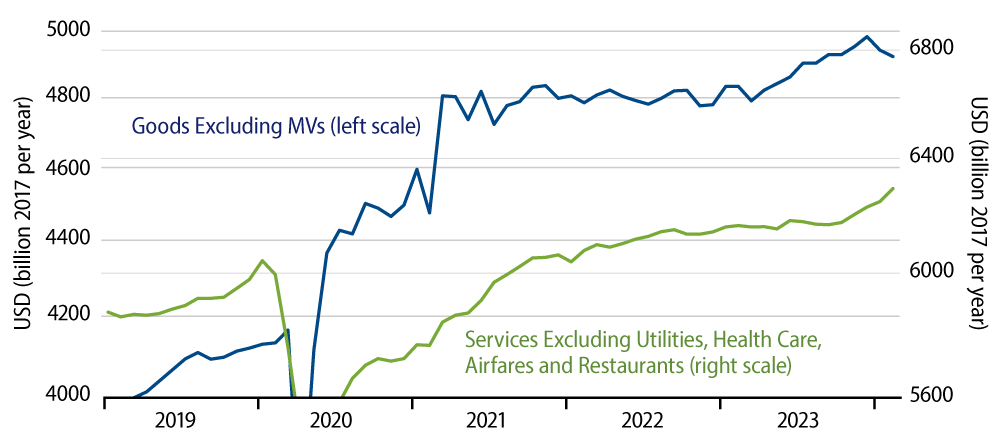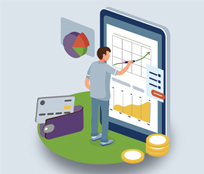Consumer spending rose a nice 0.4% in February, coming off a -0.2% decline in January. The February spending gains occurred despite a -0.4% reported decline in spending on merchandise ex-autos. In other words, all the spending gains resided within services, which were reported as rising a brisk 0.6%.
As you can see in the chart, spending developments so far in 2024 have been the mirror image of what we saw in late-2023. Then, an upturn in goods spending drove decent gains in overall consumption, even though services spending largely languished outside of the five Covid epicenter sectors (health care, restaurants, recreation, hotels and travel) that were devastated by the 2020 shutdown. In contrast, again, goods spending looks to have faltered in the last two months, and spending in the Covid epicenter sectors has been lackluster. However, that was more than offset by strong increases in spending on financial services and professional services such as legal and accounting fees.

We had been taking the recent apparent softening in retail sales as an indication that overall consumer spending trends were moderating, coming back to rates more in line with personal income trends. Instead, however, as in a game of whack-a-mole, moderating goods spending has been offset by jumps in services spending.
Meanwhile, real incomes declined in February and have grown at only a slight rate in recent months. This is opposite more buoyant spending growth that has reduced saving rates to a very low 3.6% compared to the 7%-plus saving rates prevailing prior to Covid. So far, however, that does not look to have dented consumer spending.
Speaking of whack-a-mole, last year, goods prices were declining, and services prices were the sticking point for the Federal Reserve (Fed) concerning overall inflation. Well, in February, so-called supercore services inflation declined to a 2.4% annualized rate, consistent with the Fed’s 2% target for overall core inflation. (As goods prices "typically" are flat or falling, 2.5% services inflation would generally be consistent with 2% overall inflation.) However, goods prices have bounced in the last two months, keeping overall core inflation at a 3.2% annualized rate in February.
Still, Personal Consumption Expenditure (PCE) inflation in February was more moderate than what the Consumer Price Index (CPI) showed. And for the last nine months, average inflation for the core PCE ex-housing was 1.8%. Beneath the bouncing "moles," consumer spending continues to grow, and inflation continues to moderate.



